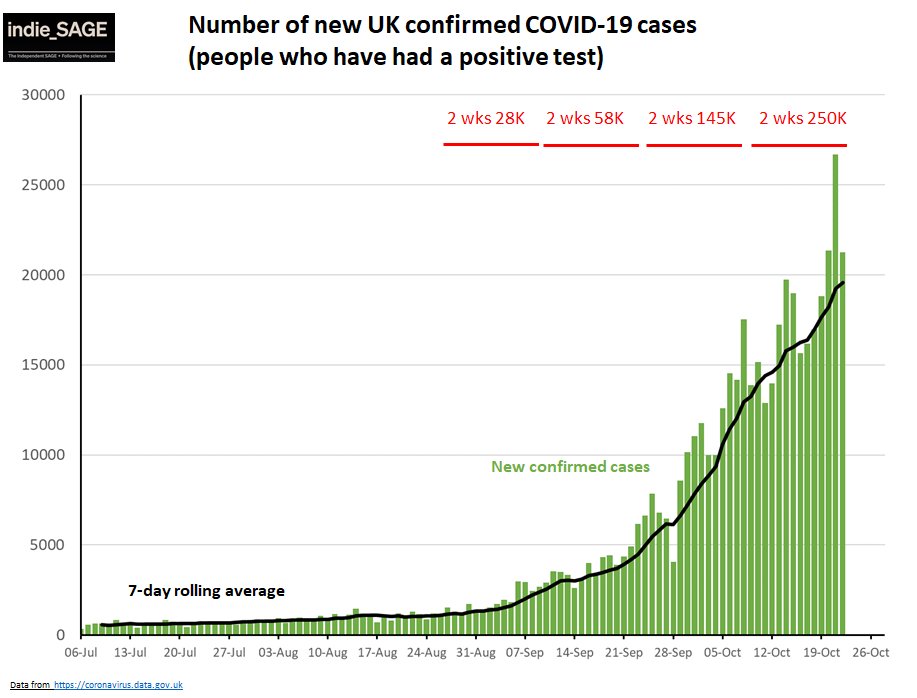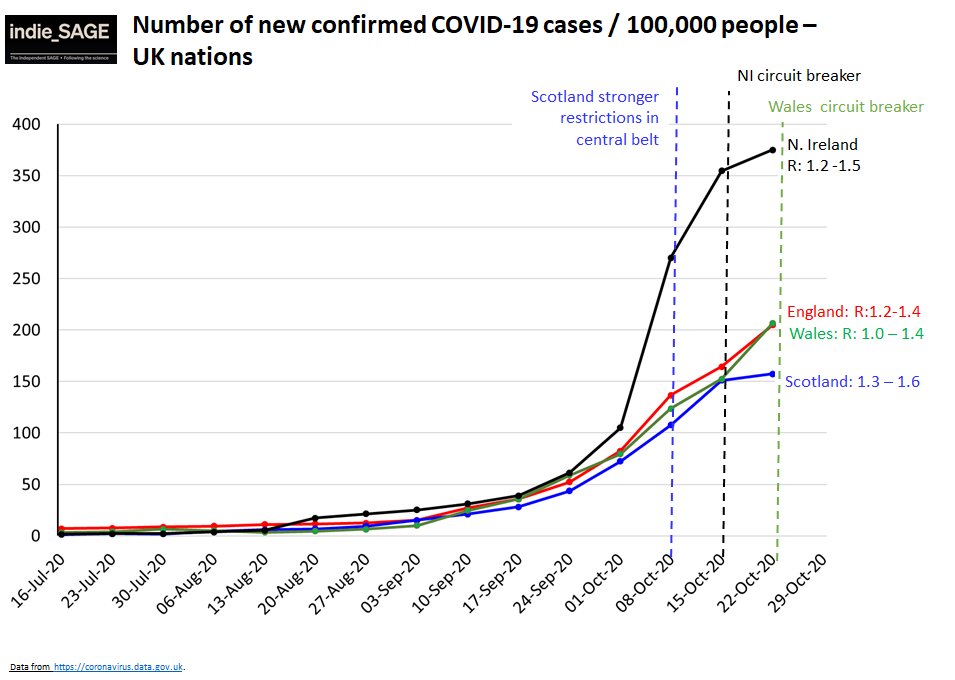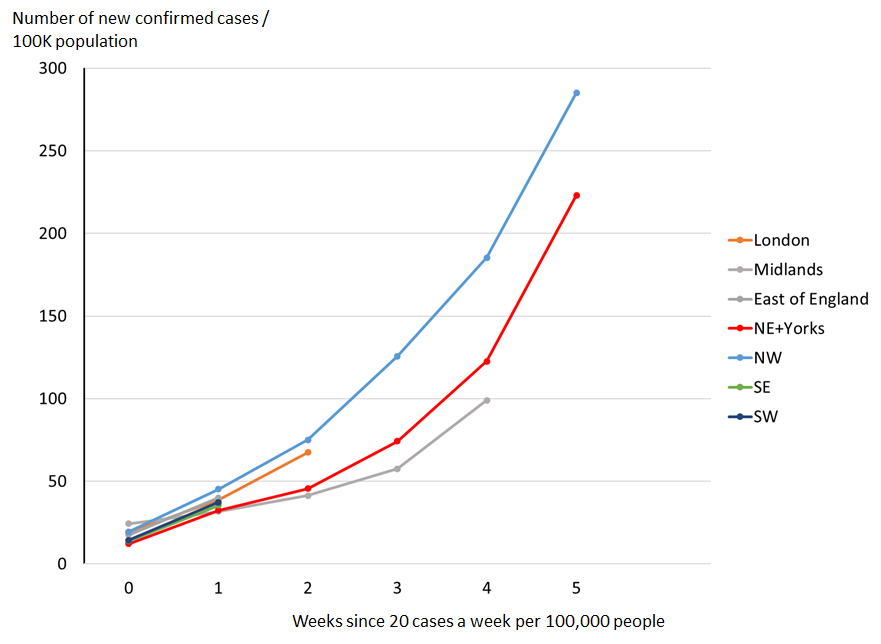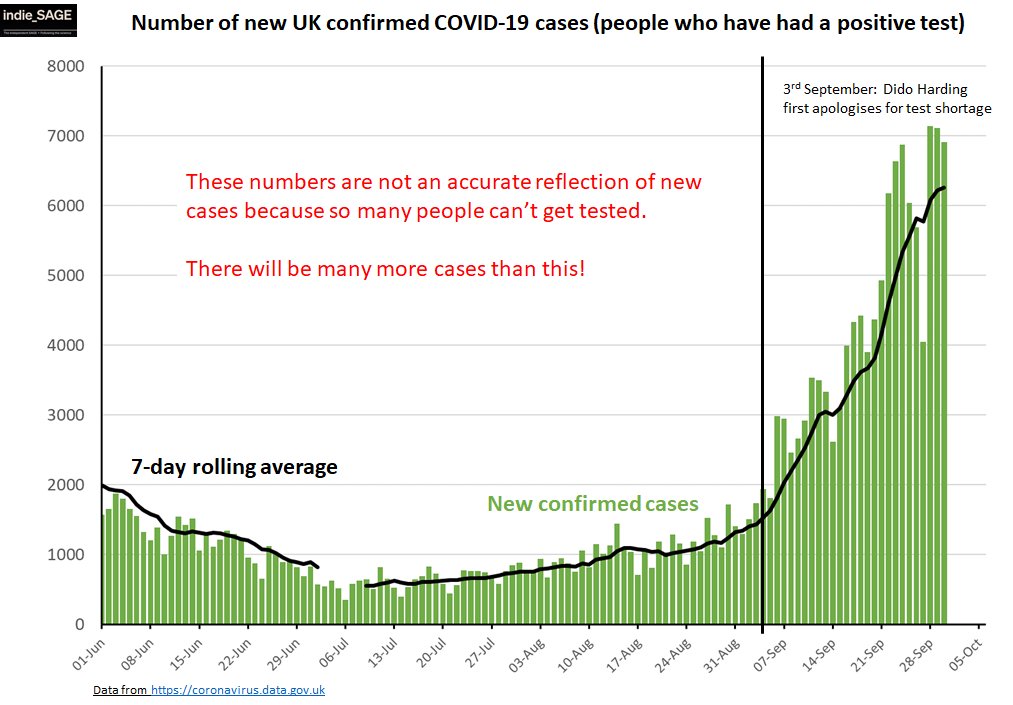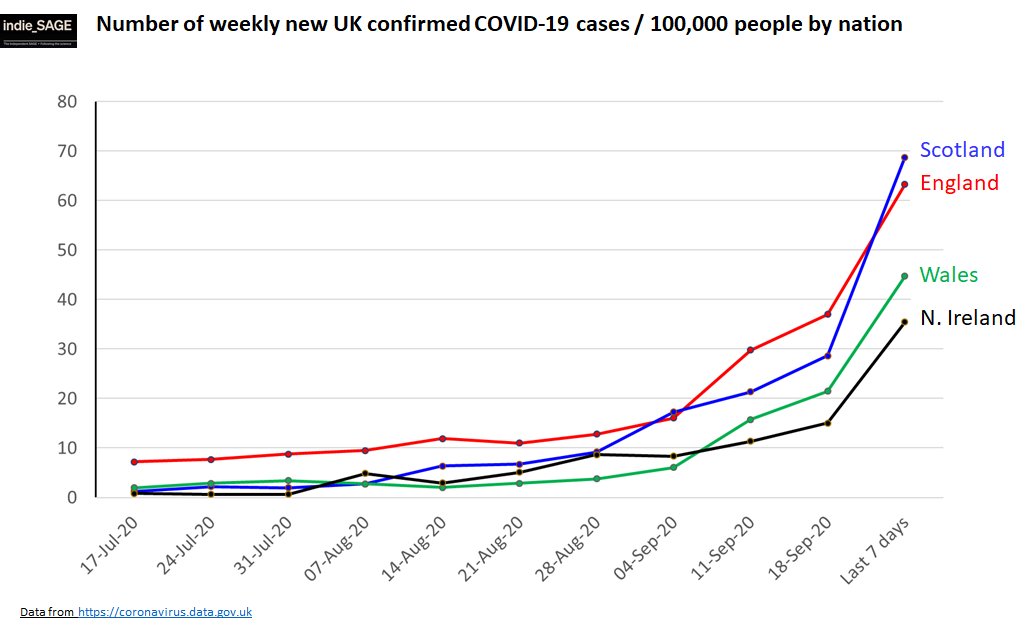
THREAD: on lockdowns, mitigation, herd immunity strategies. I have a *lot* of problems with this article by Lord Sumption in the Guardian today - so I've decided to do a thread on them. amp.theguardian.com/commentisfree/…
1. Just going to start by saying that no one thinks lockdowns are a good thing and everyone agrees they have serious & bad consequences. They are a last resort measure. I agree with Lord Sumption that they should be avoided if at all possible! But that is about all we agree on!
2. He starts off by saying "Suppose there is nothing that governments can do to stop the spread of Covid-19. What then?". That's his premise. But many countries have shown there ARE things you can do to stop spread. China, S Korea, Vietnam, Japan, Taiwan, Thailand, NZ, Uruguay...
AND then of course there's the promise of a vaccine which should start being rolled out next year. So his base assumption is already wrong and skews the rest of the article.
3. "Lockdowns temporarily reduce infections and associated deaths. But they do so only by deferring them to the period after they are lifted." True. BUT also delay until better measures are available. If they are *then* delay will save lives.
e.g. we are now better at treating Covid in hospital, so people who get covid now instead of March are less likely to die. If Vaccines come, then delay will save all the people who would have died if virus let spread. and most importantly...
Reducing cases gives time to build the systems that other countries have *proven* work: effective test, trace and *isolate* systems combined with strict border controls.
4. "In the meantime, these restrictions prolong the crisis". Not really, they stop the NHS getting overwhelmed (which affects ALL sick people, not just those with COVID). Ie they avert a much bigger crisis.
Plus if virus is running rampant, people will limit their economic activity anyway, regardless of whether there are restirctions are in place (economies have done best where covid has been suppressed).
5. "Some live in rural Cornwall, where the reproduction rate [R] is low, others in Liverpool, where it is high". this is factually wrong & not understanding R. Cases are lower in Cornwall than Liverpool but it is *spreading* faster - so R is higher in SW than North. This is BAD.
6. "Allowing people to make their own judgments, tailored to their own circumstances & those of the people around them" - this puts all the burden of understanding covid (which is hard) on people. and totally ignores the fact that MY decision affects OTHER people - inc strangers.
Somehow, allowing people to make their own judgements "also directs resources to where they are actually needed.". No idea how this works and he doesn't explain. What resources? how do people access them? how will it be coordinated?
7. "The result is to inflict an appalling injustice on the young". Covid has been terrible for the young - but again the best solution is to get life as close to normal as possible by following the examples of countries that have managed it!
8. "The risk of death for young people is very small." true, but young people can die. There is also Long Covid which affects young people too. Young people also interact with older people - you can't sequester off populations like that.
i suspect a lot of peolpe advocating this strategy are well off older people, living in a nice house and able to isolate themselves very satisfactorily.
9. "Older people who live outside such institutions may shield themselves from infection, if they choose to, though some may prefer to take the risk." . Some do not have the choice (see above).Also if many "take the risk", this impacts on whole health system!
as they get sick and need care... And *again* if NHS overwhelmed with COVID patients, this affects ALL care, with terrible consequences. (as we have learned from last lockdown, and might learn again if numbers keep going up).
10."[Modelling] is not evidence. If you want to take away people’s right to make their own decisions about their health, you need convincing evidence." WELL. Modelling provides framework for assessing future options. Evidence of the future is hard to find...
Evidence of effectiveness of possible strategies is (slowly) starting to accumulate (eg indoors much worse than outdoors, aerosol transmission, risk factors, masks). There *is* evidence that countries CAN suppress Covid successfully and open their economies.
But Lord Sumption ignores that from his very first sentence onwards. Those countries offer the solution to lockdown. His argument for effectively the Great Barrington Declaration does NOT offer a solution. (whole other thread possible on feasibilty of natural herd immunity)
11. Then there is a whole lot about how awful lockdowns are. Agreed. We shouldn't be in this position but the alternative at this point is worse (apart from thousands of deaths, hospitals overrun & covid rampant will cause people to modify their behaviour
People will have a voluntary lockdown if you like (Sweden did in fact do this in the summer, with much reduced movement and spending and still had lots of deaths. And is surging again now - worse than summer). This has just as bad impact on economy and jobs
12. "Politicians rarely ask what is in the public interest. They ask what will they be blamed for." This may true of our current govt. I certainly hope it isn't true always (& doesn't seem to be for e.g NZ, AUS). The answer is to vote for those who care about public interest.
• • •
Missing some Tweet in this thread? You can try to
force a refresh

